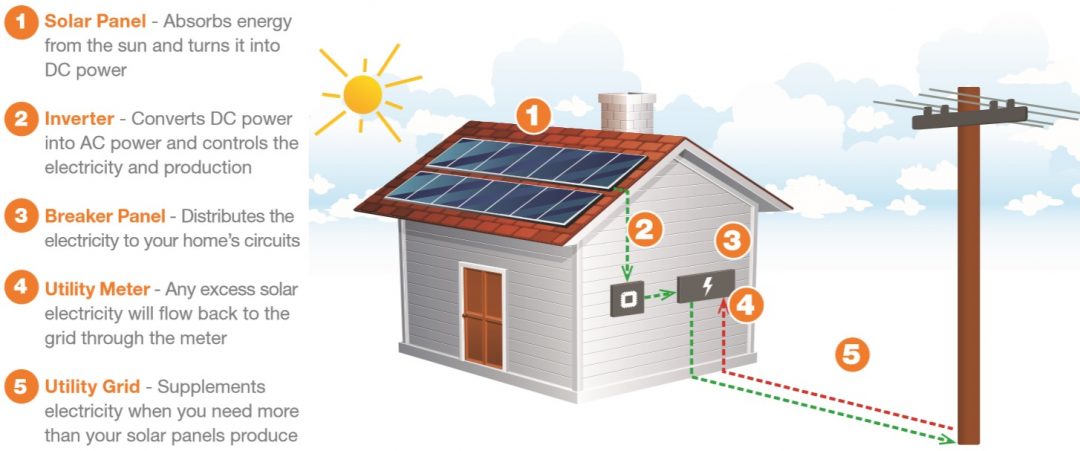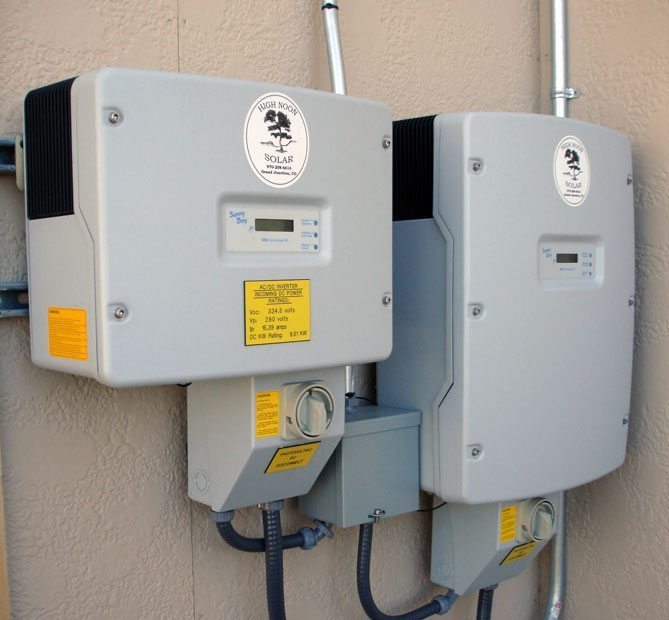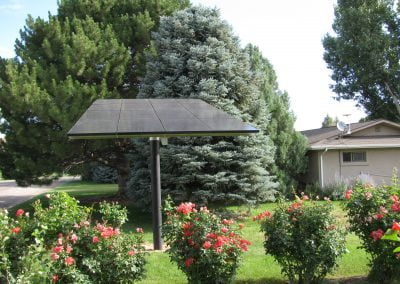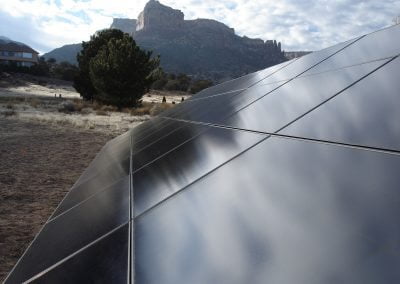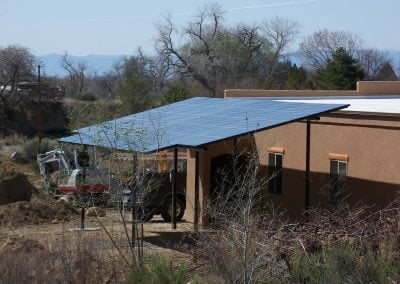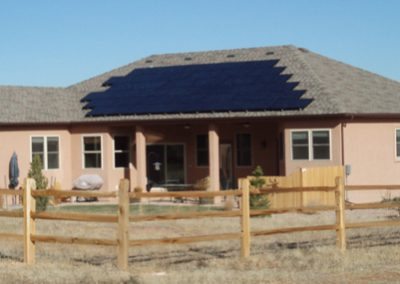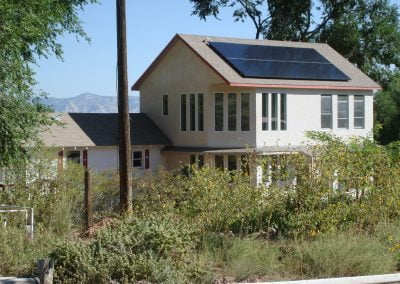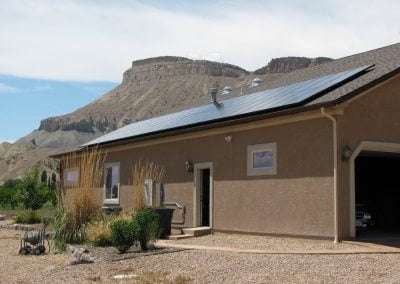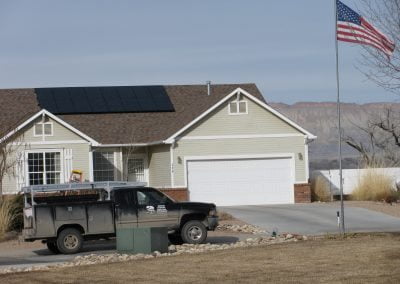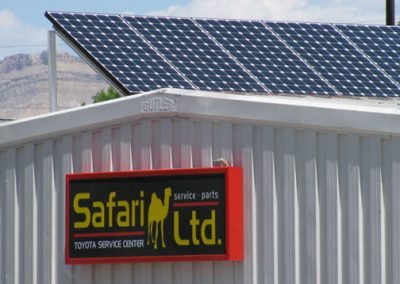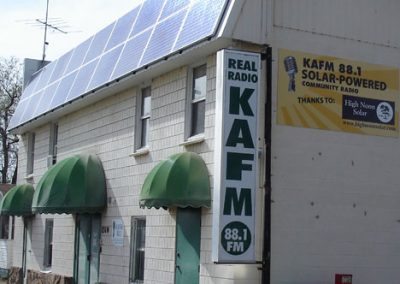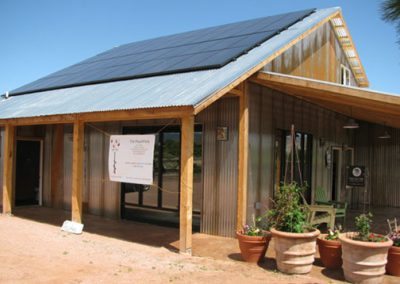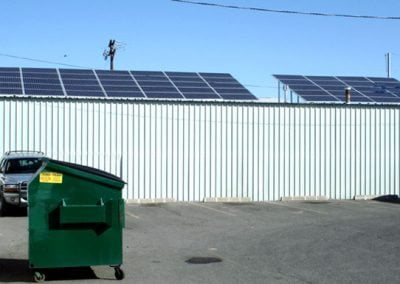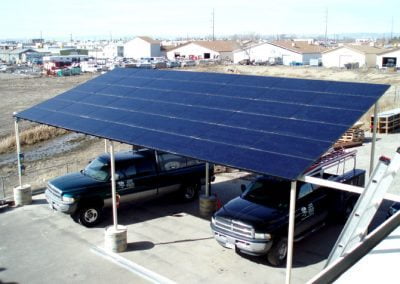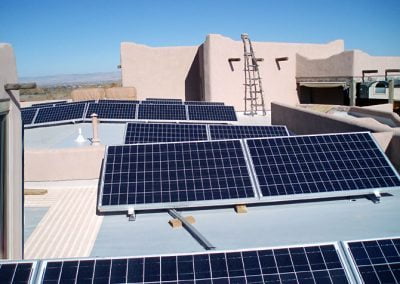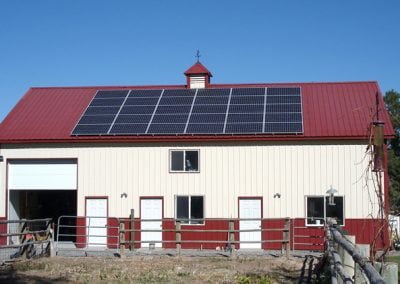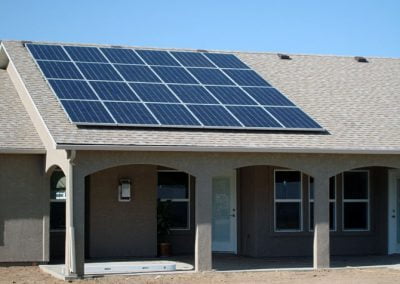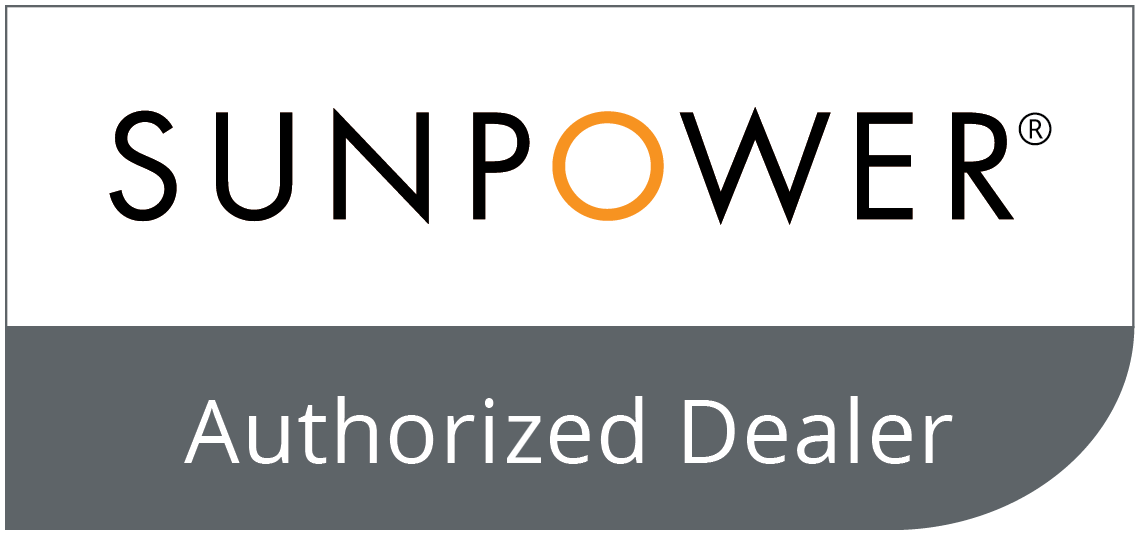26% Tax Credit Available through 2020
Day(s)
:
Hour(s)
:
Minute(s)
:
Second(s)
HOW IT WORKS
Grid tie solar panel arrays are mounted in a sunny location facing south, southeast, or southwest. These solar electric, or photovoltaic (PV), panels create DC power when the sun shines on them. This DC power is then turned into usable AC power by an inverter, which can be mounted outdoors or indoors or even on the panels themselves.This location can be as versatile as each project requires from a flush roof mounted system on a building to a top of pole mounted array located in a field near the building but, due to size constraints on available space, the roof is usually the best choice. Click the link below for some examples of roof mounting methods, in addition to options for ground mounts (where applicable).
The Inverter
Once the power is in AC (alternating current) form, it can be back-fed into a breaker box and either used within the home to power appliances, lights, and other demands or it can be sent back to the power company, essentially spinning your meter backwards. The solar power is always used in the situation of home demands provided first, then any extra being fed back into the grid. A standard grid tie is designed without the use of batteries, which tend to demand a higher maintenance factor, instead using the utility grid as, essentially, a better more efficient battery.
An Integrated System
The majority of residential solar grid ties are designed as ‘net zero’ electricity usage homes as a forefront goal for the system. This means that, during the day, the home’s meter spins backward, accruing a credit with the utility company. At night, when the sun has set, that credit is used up again by the loads in the home. This creates a giving and taking of power with the utility company. Expanding on this premise, the residence also creates an overall credit with the utility company during long, sunny summer months. This credit is then used again during the winter. At the end of the year, if a solar system has created more power than the home used during that time, the utility company pays for the extra power, usually at a wholesale (rather than a retail) rate.
SOLAR FINANCING
Our solar investment program allows you to own the system while keeping the savings for yourself.
SOLAR REBATES
Solar rebates are in place statewide by utility companies, plus federal tax incentives are available.
SOLAR BENEFITS
Solar installations qualify for tax incentive rebates, state rebates and depreciation.
Contact
569 S. Westgate Dr. #2
Grand Junction, CO 81505
About Us
High Noon Solar is an innovative, community-based solar sales, installation, and maintenance company located in Grand Junction on Colorado’s Western Slope since 2005.
